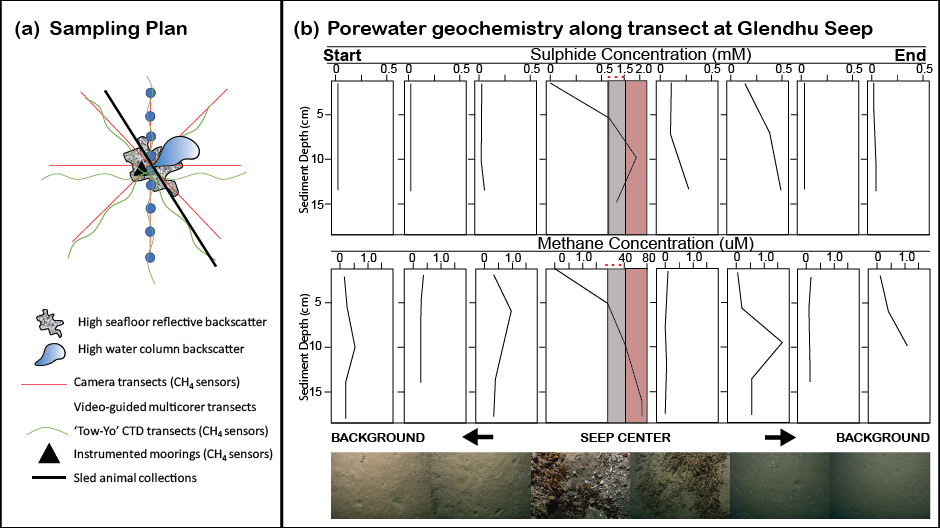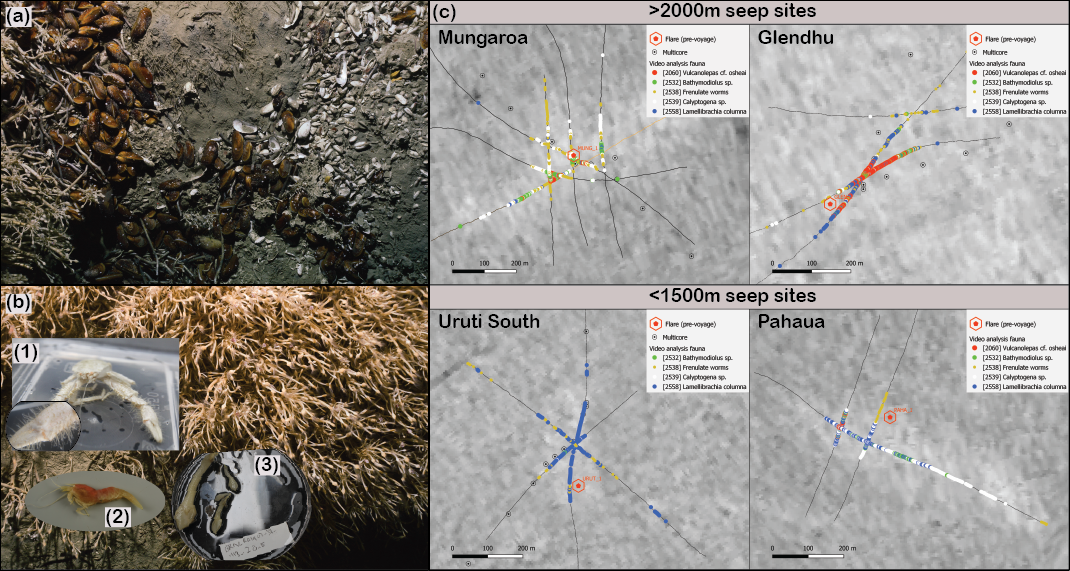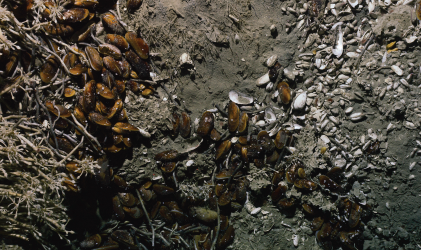Sarah Seabrook¹ ³, David Bowden¹, Cliff Law¹ ³, Ashley Rowden¹ ⁴ and the TAN1904 voyage team
¹National Institute of Water and Atmospheric Research, New Zealand; ²School of the Environment, University of Auckland, New Zealand; ³University of Otago, New Zealand; ⁴Victoria University of Wellington, New Zealand
Contact: *sarah.seabrook@niwa.co.nz; sarahseabrook.com
Gas hydrates are known to play important roles in sediment stability, marine ecology, and ocean chemistry. As global interest in commercial extraction of methane from hydrates intensifies there is an urgent need to understand what implications this may have for surrounding ecosystems. The Hikurangi Margin offshore of New Zealand is an area with both the geologic potential for hydrate mining and economic interest in such activity. HYDEE (Gas Hydrates: Economic Opportunities and Environmental Implications) is a multi-disciplinary research programme designed to address two main questions: (1) Would hydrocarbon production from gas hydrates significantly impact seafloor stability, ecology, or ocean biogeochemistry? And (2) What are the likely socio-economic implications of gas hydrate production in New Zealand?
Through three completed voyages and two planned voyages, we have been conducting targeted exploration and experimentation to answer these questions, while also making exciting discoveries along the depths of the Hikurangi Margin. Within the marine ecosystem theme of the HYDEE project, we have coupled planned transects with opportunistic ROV sampling to characterize the biogeochemistry and ecology of methane seepage along the margin. With sampling following lines from the center of seep sites out to background (Figure 1a) to encompass seepage gradients, we are working to understand how seep ecosystems interact with the surrounding environment, and how these interactions may affect the future use of important ecosystem services.

As is apparent in the porewater geochemistry, as we move along the seep-scape we transition from background conditions, characterized by ambient methane and sulphide concentrations, to the center of seepage, marked with elevated concentrations (Figure 1b). From samples collected along these transect lines we will be analyzing the microbial, meio-, macro- and megafaunal communities, and various geochemical parameters to build a comprehensive picture of the seep ecotone. Preliminary analyses of the animal communities at four seep sites have revealed pronounced differences in community composition among sites. While the two shallower sites were broadly similar to others previously investigated on the margin, the deeper sites (>2,000 m) were characterized by high densities of bathymodiolin mussels and eolepadid barnacles forming close associations with upright thickets of Lamellibrachia tube worms (Figure 2c). Taxonomic identifications are on-going but several new species have likely been found amongst the seep sites (including shrimp and squat lobster taxa), and some new associations of known taxa with seep environments
(including the eolepadid barnacles; Figure 2a,b).
As we continue our work on this project, we will be broadening our scope into mobile megafauna, including commercially important fisheries species, to investigate if there is a trophic connection between seeps and animals important to the existing New Zealand economy. We will also be digging deeper into the sediment biogeochemistry, capturing how the microbial communities may vary across these seep-scapes, and informing overall seep influence on the benthos through a broad suite of geochemical proxies.
This work is funded by the New Zealand Ministry of Business, Innovation and Employment and has benefited from collaboration with the US-funded NSF project SAFFRONZ.


